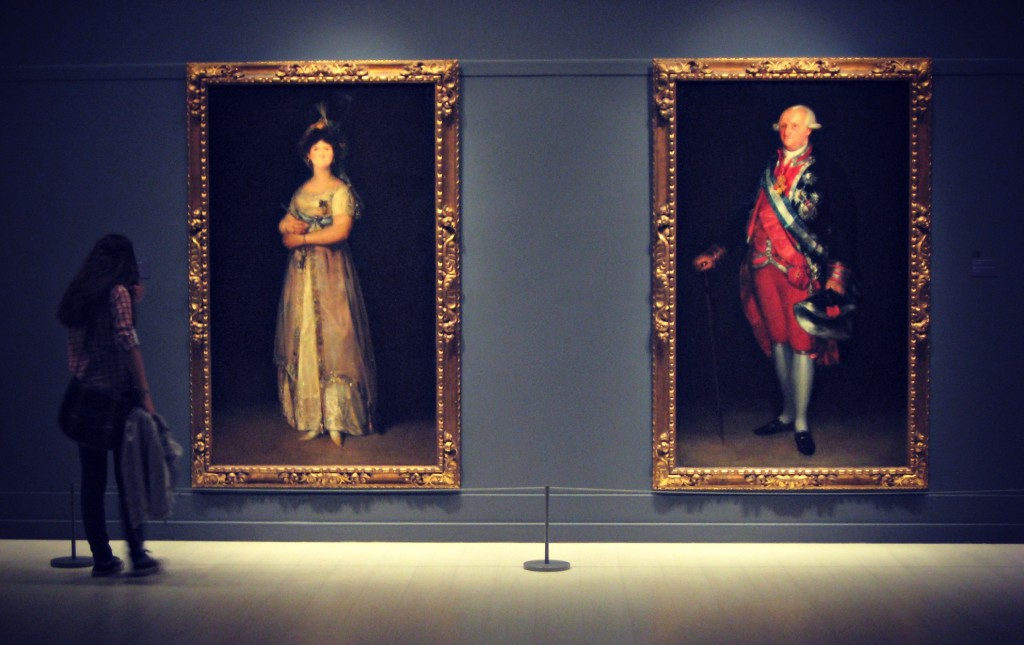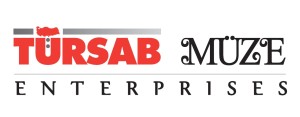The Pera Museum has welcomed 700 thousand guests in 6 years, since its inauguration in 2005. This well-deserved interest is to be explained, among other, by the fact that it has been instrumental in bringing to the broad daylight many aspects and components of our cultural and artistic heritage which had been neglected before.
The number of private museums and the quality of their collections constitute one important litmus test when it comes to evaluate the artistic substance of a country.
The Pera Museum, through the creation of which Suna Kıraç realized her dream, is indeed a “private art museum and gallery” which greatly contributed to that substance.
Speaking of the Pera Museum, the “Tortoise Trainer”, a very valuable painting painted in 1906 by the founder of the İstanbul Museum of Archaeology, Osman Hamdi Bey, is the preeminent work of art one associates with the museum. The painter himself comes alive in and through this famous painting which expresses a sarcastic innuendo, depicting Osman Hamdi Bey as an Ottoman intellectual in oriental outfit but with his face turned to the west, who worries about the slow (tortoise) pace of progress achieved in that direction, thus symbolically evoking the connotations of the word “Pera”.
Although this painting is the major work of art on display at the Pera Museum, the curators do not wish the other pieces of their museum to be totally overshadowed by the Tortoise Trainer. Özalp Birol, the Director General of the Suna Kıraç Foundation for Cultural and Artistic Ventures explains this apprehension in following words: “We never wished our museum’s renown to be confined to solely the Kıraç Collections and the Tortoise Trainer. This is why we placed that painting at an adequate space where it belonged to thematically within the coherence of the curatorial concept of the first exhibition we organized here. Various people wondered why this masterpiece was displayed like just another painting. Later, as the public became more aware of the Pera Museum and the wide scope of its collections, we finally decided to display that magnificent painting at the place of honour where it really belongs to.” Not to be categorized under the name of only one painting, even if it is a major masterpiece, is an understandable concern when we consider the vast array of their art collections including the collections of the Kıraç couple.
The museum created by Suna and İnan Kıraç in order to present to the public the works of art they have been collecting since the 1980’s is now six years old. The former Bristol Hotel, constructed 1893 in Tepebaşı, Beyoğlu by architect Achille Manoussos serves as venue to their Pera Museum. The five storey museum exhibits three permanent collections, Anatolian Weights and Measures, Kütahya tiles and ceramics, and Orientalist Painting. In addition to exhibits, the Museum realizes an extensive contribution to Turkey’s cultural and artistic life by hosting a broad range of cultural events, both at national and international level. To mention particularly in this framework are the special exhibitions devoted to the works of contemporaneous young artists, and special thematic or individual exhibitions.
Art’s message!
The Orientalist painting collection is one the most important cultural heritage components the museum has to offer to the public’s eye… The Orientalist collection consists of more than three hundred paintings, including works by European artists inspired by the Ottoman world from the 17th to the early 19th century, depicting scenes of Ottoman daily life, portraits, panoramic İstanbul landscapes. Naturally, the “Tortoise Trainer”, the work of Osman Hamdi Bey, who has been characterized as the genre’s only “native Orientalist” is of special significance to that collection.
The presence at the Pera Museum, of the Kütahya tiles and ceramics collection presenting a great variety and quality is evidence to the fact that these products from Kütahya, formerly somewhat neglected by art connoisseurs, were sufficiently “rich to form an art collection”. Thus, the labour of love undertaken by Suna and İnan Kıraç paved the way for certain elements of our cultural legacy to obtain their true value.
While the İznik tiles, traditionally very highly priced at international art markets kept getting more and more expensive, the Kütahya tiles and ceramics remained underestimated for a long period. However, the purchase of the Kütahya tile and ceramic items by the Pera Museum, provoked an increased interest in the world for these products originally manufactured as house utensils between the 18th and the 20th centuries, and led to a sudden, tripled and even quadrupled hike in their prices at world markets.
A story in each corner
The pieces on display at this part of the museum present great interest as much from the point of view of their refined workmanship as from the point of view of their symbolic contents. Male and female figures telling the story of their era’s daily life, popular tales, even stories narrated by foreign visitors are revitalized as decoration on these pieces.Another interesting aspect of this section is that it shows the parallelism and differences between the Orthodox masters and their Moslem apprentices from an artistic point of view. On display side by side are two dishes, one decorated by an Orthodox artist with cherubic figures, the other manufactured by a Moslem apprentice who could possibly not draw a cherub’s face on his dish due to his religious beliefs. But, he adorned four corners of the dish with angel wings, interpreting in his own style the art learned from his master; as a result of which Kütahya tiles and ceramics gained a new design. Consequently, the angel wings pattern became a characteristic element of the Kütahya tiles and ceramics craftsmanship.
The Kütahya Tiles and Ceramics Collection of the Pera Museum is not only relevant to examining such examples of naive and primitive art, but also to acknowledging the profusion of interesting details demonstrating how originally a branch of handicraft could be transformed into an art form.
A unique collection
The Anatolian Weights and Measures Collection exhibits in chronological order the weight and measure tools used on Anatolian soil throughout the centuries. Its sole rival is the Ashmolean Museum in Oxford, Eng-land. It contains basalt stone weights from the Late Assyrian period (912-612 BC) and from the Hittites. Even measures designed by the great Ottoman Architect Sinan are found here. The preeminent piece of the collection is the ball of a steelyard designed in the form of a Heracles head, dating from 200 BC.
The collection is composed of 10 thousand pieces and offers an exciting opportunity to follow the evolution of art and science.
World giants in İstanbul
Pera Museum is presenting to the public in İstanbul, not only its own collections, but also works of great world artists through special exhibi-tions. The Picasso, Marc Chagall and Botero exhibitions in 2010, the Frida Kahlo and Diego Rivera Exhibition which started in 2010 and lasted until March this year and which attracted over 120 thousand visitors were he recent highlights.
Director General Birol Özalp tells us that they want the Pera Museum to be remembered through such major projects and explains their objectives:
“When planning such grand exhibitions, our intention is to give the Turkish public a chance to become familiar with the works of the great masters, but at the same time, to take this opportunity to see the unique treasures of our permanent collections. Important is to offer to our public the good and the beautiful while contributing to a greater cultural consumption, including increased museum visits, by providing the highest possible service quality within the range of affordable prices. In this year’s last quarter, we will present the Young Art Project prepared by the Eskişehir Anatolian University as well as the valuable art collections of the Turkish Central Bank. Finally we plan to welcome two paintings of Osman Hamdi Bey which are part of the Collection of the University of Pennsylvania (Penn State), and which were not presented to the public in Turkey before. The same exhibition will also include the writings, drawings and ephemera of American scholars who took part in archaeological research on Ottoman territories.”
Pera Museum is only six years old but already often mentioned in international art publications. It offers the Turkish people direct access to art treasures they believe to be as remote as the stars.
The tortoise trainer
The most interesting piece of the Pera Museum is undoubtedly the Tortoise Trainer painting by Osman Hamdi Bey. This masterpiece dated 1906 is well-known to the Turkish public, not only due to its artistic value but also because of the fact that it had to go through an adventurous transactions process in the 2000’s. Trans-ferred to the Savings Deposits Insurance Fund from the private collection of Erol Aksoy’s Bank of Economy, the painting was purchased for the record sum of 5 million Turkish Pounds (approximately 3.5 million US dollars) by the Pera Museum in December 2004. The 222 x 112 cm painting is not only drawing attention through its harmonious use of colours, its refined details, its depth perspective and the masterly well-adjusted distribution of light and shadow, but also due to its symbolic criticism of bureaucracy.
Analysts suggest that a sarcastic innuendo is expressed through the composition of the figures. According to historian of the art Professor Dr. Zeynep İnankur, Osman Hamdi Bey depicted himself as a “Tortoise Trainer” in oriental garments, but turning his face to the west. He is holding two instruments in his hands; a nakkare, a small kettledrum used in mehter music and a ney, nay, a reed flute often used to play Mevlevi music. On the floor are turtles representing the slow-motion bureau-crats obstructing creativity and/or reforms…
The trainer’s efforts to educate the turtles through art, represented here by music, seems to prove a struggle in vain, because the turtles do not perceive the rythm of the drum due to their thick tortoiseshell and are not able to hear the nay because they do not possess ears. But the “Trainer” continues to strive and does not give up his education effort against all odds.
This article has originally appeared in “Müze” Magazine, published quarterly with the contributions of the Ministry of Culture and Tourism. We would like to thank TÜRSAB Museum Enterprises for sharing this piece with Istanbul Digital Platform followers.




















